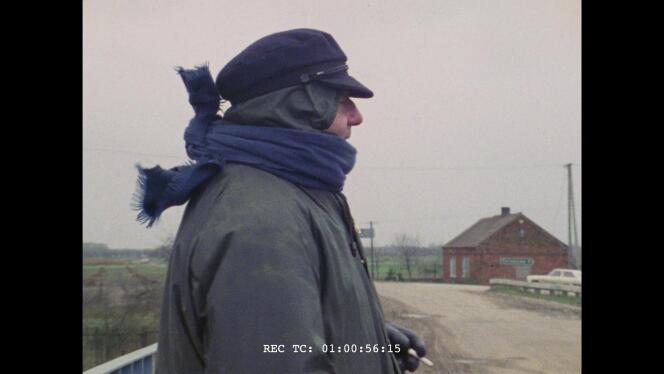Twelve years of work. two hundred and twenty hours rushes filmed mainly between 1978 and 1979, one hundred and eighty-five hours devoted to seventy interviews, thirty-five to locations and landscapes. Ten of them used to make Holocaust (1985) during an editing process which alone lasted five and a half years. This monument of contemporary cinema therefore covers, like an iceberg, a sort of ghost which would be twenty times the size of the existing film and of which it is, in a certain way, a part.
Editing, a decisive operation, will have split this mass into two distinct bodies of work. On the one hand, the public work which will have named and defined the Shoah, its artistic ambition, its posterity, its inscription both in the history of cinema and in the collective memory of the event. On the other hand, the filmed material – endowed with no less testimonial value and which would be intended par excellence for the field of research of historians.
Claude Lanzmann nevertheless mentioned, in his book of Memoirs The Patagonian Hare (Gallimard, 2009), the difficulty not only dramaturgical, but moral, of editing this film: “To choose is to kill”, he wrote there. In this light, Holocaust is not only the masterpiece that we know, it would also be a sort of long remorse carrying within itself the trace of all those left behind in the final cut. Which is appropriate for a film which collects the words of survivors of hell, themselves testifying to the extermination of their companions and loved ones. Lanzmann, let us have no doubt, sees himself as a modern Charon, who transports these unburied souls to the kingdom of the dead, where, in the chiaroscuro of the cinema screen, they can finally find rest.
A modern Charon
This explains the sequel to the films made after Holocaust from the rushes of his magnum opus. A living person passing by (1997), on the Red Cross delegate to Auschwitz Maurice Rossel who saw nothing special there. Sobibor, October 14, 1943, 4 p.m. (2001), about Yehuda Lerner, colossal hero and one of the rebels of the Sobibor camp. The Karsk Reporti (2010), about this Polish resistance fighter who testified to the abandonment of the Jews by the Allies. The Last of the Unjust (2013), on Benjamin Murmelstein, head of the Jewish community of the Theresienstadt camp, who assumed his task in the heroic intelligence of his abjection. The Four Sisters (2017), which collects the testimony of survivors Ruth Elias, Ada Lichtman, Paula Biren and Hanna Marton, who finally make the voices of women heard in this concert of dereliction. All magnificent, all moving, all worth rediscovering.
You have 50% of this article left to read. The rest is reserved for subscribers.
